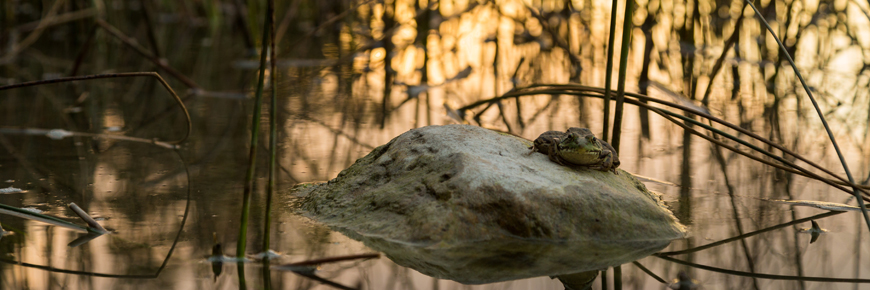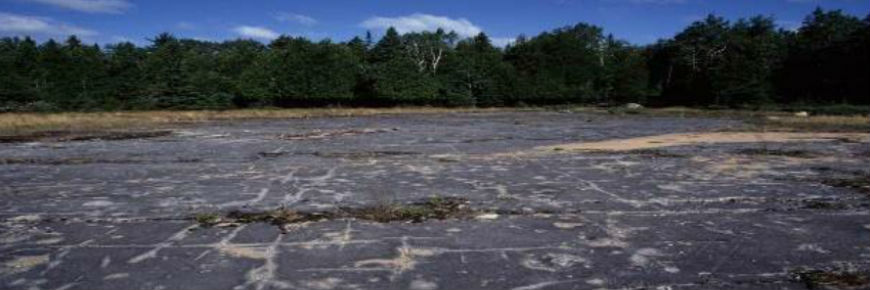
Environment
Bruce Peninsula National Park
Beyond Bruce Peninsula National Park’s impressive landscape there is a rich natural world of unique features, species, and processes to behold. The variety found in this biosphere reserve is truly rare. To better understand the intricacies of it, the park is organized into habitats and ecosystems.
Ecosystems

Forest
The last green frontier in Southern Ontario, the forest is the fabric of the Bruce Peninsula’s ecosystem and blankets the park. The park has an amazing mixture of trees. Coniferous trees tend to dominate with species such eastern white cedar, balsam fir, and white spruce. Other trees found here include pine, birch, poplar, oak, and beech. The mixture of hard and softwood trees draw many different types of birds and small mammals. As well the forest serves as a large unbroken habitat offering the vital space larger mammals need to survive. Great examples of Bruce Peninsula forest can be experienced at Halfway Log Dump, Singing Sands and anywhere along the Bruce Trail.

Ancient rock
The bedrock found throughout Bruce Peninsula National Park is called dolomite. It is a type of limestone that was formed as part of a tropical sea 430 million years ago. The rock is fairly soft and has been sculpted through a process called ‘karst’ which means erosion by water. Bruce Peninsula National Park and Fathom Five National Marine Park contain a remarkable number of karst rock features including overhangs, cliffs, caves, potholes and flowerpots. Amazingly the rocks are alive with life that grows both inside and outside the rock face.
Ancient cedars, lichen and mosses grow on ledges and out of cracks in sheer rock faces far from any soil. Hidden within the rock, green algae and fungi grow inside the dolomite – this is called the “Cryptoendolithic layer”. The countless caves and crevices provide homes for bats, ravens, turkey vultures, swallows and bats. Hiking along the Bruce Trail and Georgian Bay shoreline, you will be face-to-face with all of these rock features and the life that grows on it.
Alvar
Sounds like it is spelt, the alvar is an exotic habitat unique to a few parts of the world. In Canada it is concentrated in the Great Lakes, Bruce Peninsula location. This smooth limestone bedrock with little soil cover is flooded in spring and baked dry in summer. Defying convention, alvars provide critical habitats for several grasses, rare flowers, lichens, mosses, snails and many bird species. Surprisingly rich in biodiversity, there are at over 600 species of plants, types of algae, kinds of moss, and lichen found here. Learn more about the different types of alvar found in the park.

Water and wetlands ecosystem
The Bruce Peninsula is almost surrounded by water, as it divides Georgian Bay from Lake Huron. Fresh water lakes, bays, streams, marshes, and fens cover 9 per cent of the park and provide a dynamic habitat to 12 native species of fish including Brook trout and to colonial birds such as Herring gull, Ring-Billed gull, Double-Crested cormorant, Great Blue heron and Common tern. There are also 48 species of aquatic plants and countless insect species that frequent the watery sections of the park. The Singing Sands is one location where you can see what life is like in a dune and fen (marsh) system.
Related links
- Date modified :
